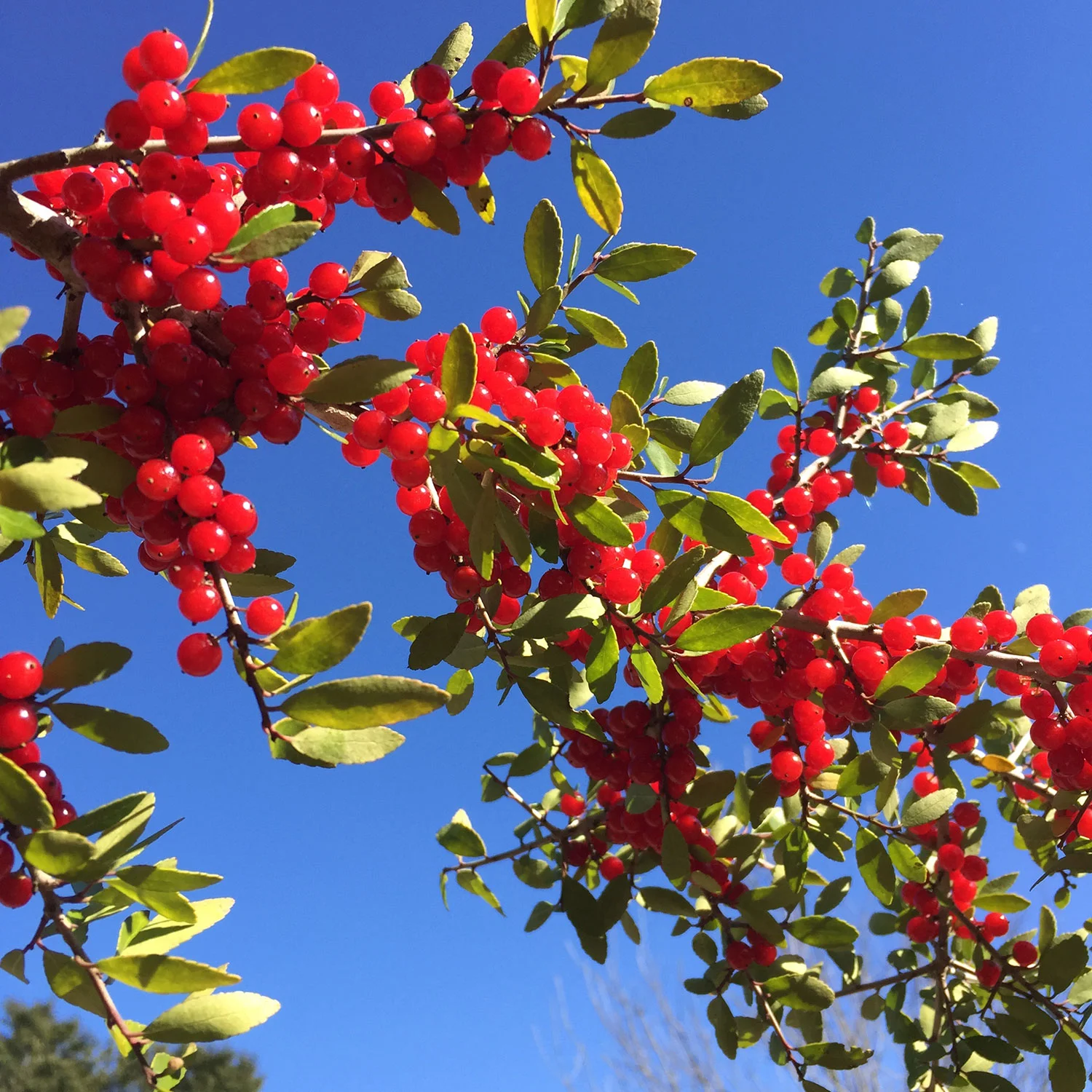If you ever drive down to St. Marks Wildlife Refuge during the winter months, it’s hard not to notice the Yaupon holly, Ilex vomitoria. The bright, cherry-red berries provide a shock of color along the roadsides in the otherwise dull winter landscape.
The shrubs are less noticeable the rest of the year with their small, oval, dark evergreen leaves. Their dense and shrubby evergreen growth make them ideal for screens or hedges while also providing habitat for songbirds and other wildlife.
Yaupons are easy to grow, salt-tolerant, and reach 20 to 25 feet tall. They tolerate full sun to shade, but produce more berries in full sun. The weeping variety has down-turned branches and a beautiful shape that makes a stunning show when planted alone as a specimen plant. I planted one by my garden gate last year.
I love the shape of the weeping Yaupon and I love to use the red-berried branches for holiday decorating, but I didn't just plant it for aesthetic reasons. As a native plant, Yaupon holly has an ecological role to play as a functioning member of our local ecosystems. Pollinators flock to its masses of tiny white flowers in spring, and birds eat the berries that follow the flowers. Most importantly, our native insects feed on these plants they have evolved with, providing protein rich meals (in the form of themselves) for birds and other wildlife.
The wildlife, however, are not the only ones eating it. The prime reason I planted my Yaupon was for its caffeine rich leaves. By weight, the leaves contain more caffeine than both coffee beans and green tea —the highest caffeine content of any plant native to North America. Yaupon holly is also high in antioxidants and less bitter than green tea. It is a close cousin of the South American yerba maté (Ilex paraguariensis) and its tea is similar in flavor and quality.
Yaupon holly tea has been historically used by Native American tribes for both recreation and ceremony. Early white settlers knew the tea as "the black drink." The Seminoles used it ceremonially, boiling it to excess and drinking it to excess, causing vomiting and diarrhea which they felt was purifying. This is where the name Ilex vomitoria originates from. When brewed lightly, however, as you would any other tea, it is pleasant and harmless. During the Civil War, Southerners substituted Yaupon holly tea for coffee and black tea.
Leaves and stems of Yaupon holly may be used fresh, dried or roasted and stored like any dried herbal tea. They were traditionally parched to a dark brown over a fire. I follow the recipe taught to me by St. Marks Ranger Scott Davis, an experienced wild food forager. It is extremely important you positively identify the plant you harvest as Ilex vomitoria; if you are at all unsure, consult an expert.
Yaupon Holly Tea
Recipe by Scott Davis
1. Collect younger leaves and new twigs. Though older green leaves are usable, they contain smaller concentrations of caffeine. To harvest leaves from older stems, grasp the stem near the trunk and slide the hand outward to strip off the leaves.
2. Allow to dry, or dehydrate for quicker results.
3. Bake leaves (to activate caffeine) at 300 degrees for 8 minutes. Baking longer will produce a black tea variety, as opposed to a less-oxidized green tea.
4. Options: Dicing the leaves (with a knife or blender) prior to steeping will enhance caffeine activation. Add other ingredients at this point if you like, such as mint leaves. I love yaupon & mint tea.
5. Steep in hot water for a few minutes, then strain out the leaves. I like to use my French press, but you could also run it through a coffee machine (1 tablespoon = 1 cup).


